Mariscal Mine Big Bend National Park. (original) (raw)
Photo courtesy Abdul Khan, October 2016
History in a Pecan Shell
Local farmer Martin Solis is credited with discovering cinnabar outcroppings on his land in 1900. Solis showed the bright red ore to local store owner (and customs agent) Ed Lindsey. Lindsey filed a claim on Mariscal Mountain - modestly naming the mine after himself. Lindsey started limited excavation of ore but transporting it to Terlingua for processing was costly. In 1905 Lindsey sold his interest to Isaac Sanger of Dallas. Sanger renamed operations to the Texas Almaden Mining Company. Sanger's operation only lasted four years - a year less than Lindsey's run.
Mexicans heard of the mine and crossed over the river for work. They first built crude shelters at the foot of the mountain and these slowly evolved into stone houses. Vegetables were planted a mile north of the mine on Fresno Creek and the gardens were tended by the miners wives who drew water from shallow hand-dug wells. Drinking water was freighted in from Glenn Spring - a distance of ten miles.
Between 1919 and 1923 many one-to-three room houses were built and these still remain - as ruins. During WWII when operations were managed by the Vivianna Mining Company, ten CBS (concrete block stucco) homes were built for the miners and their families.
The economy was a very closed circle. While experienced miners earned 1.50foreachten−hourshiftandlaborersearned1.50 for each ten-hour shift and laborers earned 1.50foreachten−hourshiftandlaborersearned1 to $1.25 - both worked a six day workweek and both spent their paychecks at the company store.
Between 1900 and 1943 Mariscal Mine produced 1,400 flasks of mercury - 1/4 of the US production.
Operations were overseen by a handful of U.S. citizens while the miners, workers and freighters were all Mexicans. The freighters hauled the mercury from the Mine to Marfa while they hauled in supplies and firewood to stoke the furnace.
The pick and shovel work was as unhealthy as it was difficult. Contact with the ore was bad but assisting with the processing was worse. The furnaces released mercury sulfide which proved harmful - if not fatal - to the workers. Mercury poisoning showed it's first symptoms by workers producing abnormal amounts of saliva. Most miners were toothless within a few years of exposure. The lucky ones escaped with chronic respiratory problems and no one bothered to document cases of dementia or madness.
Cinnabar ore must be heated to 360�F to release the liquid metal. This part of the process was done in the large furnace and then the molten ore was run through a series of condensers. Within the condensers the molten mercury was forced through iron pipes. As the vapor cooled gravity ran the mercury across slanted floors and into wells where it was later drained into iron flasks and hauled to the railroad at Marfa.
Mariscal Mine Photo Gallery
Abdul Khan Photographs
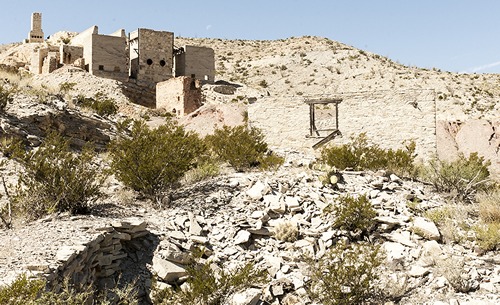
Photo courtesy Abdul Khan, October 2016
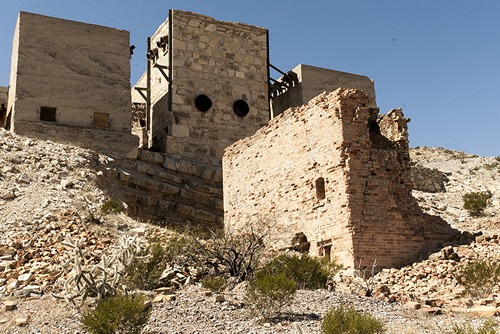
Photo courtesy Abdul Khan, October 2016
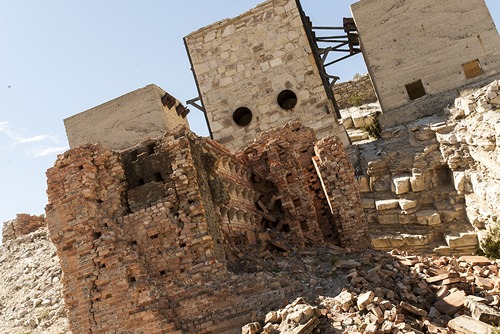
Photo courtesy Abdul Khan, October 2016
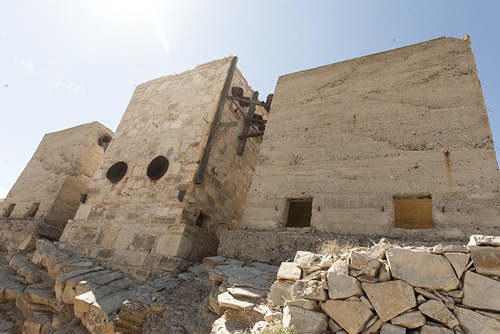
Photo courtesy Abdul Khan, October 2016
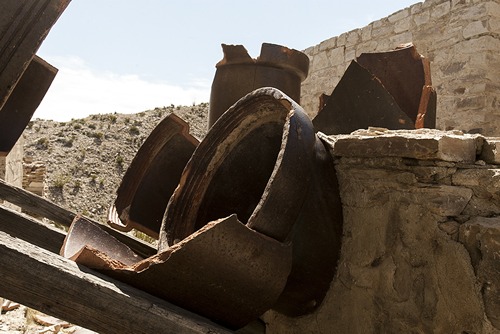
Photo courtesy Abdul Khan, October 2016
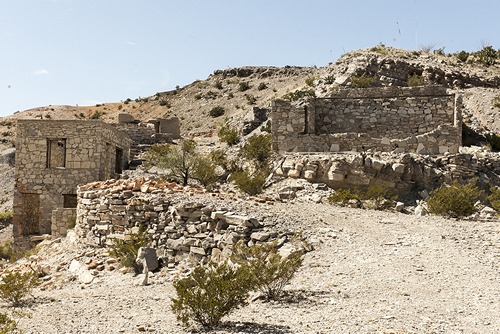
Photo courtesy Abdul Khan, October 2016
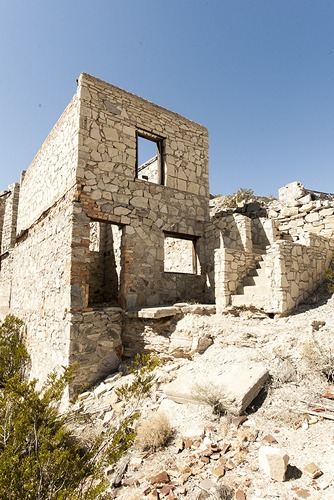
Photo courtesy Abdul Khan, October 2016

Photo courtesy Abdul Khan, October 2016
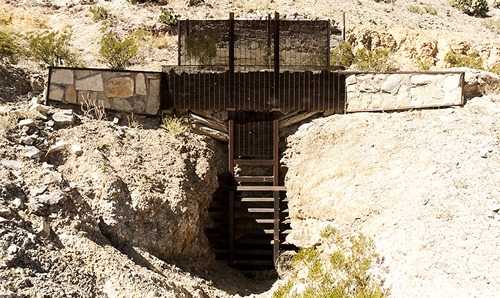
Photo courtesy Abdul Khan, October 2016
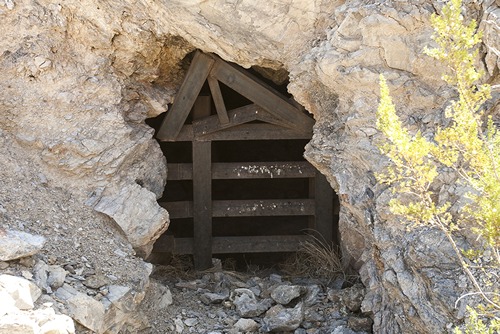
Covered mine shaft
Photo courtesy Abdul Khan, October 2016

Photo courtesy Abdul Khan, October 2016
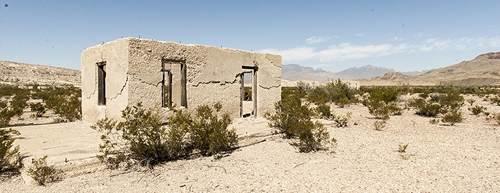
Photo courtesy Abdul Khan, October 2016
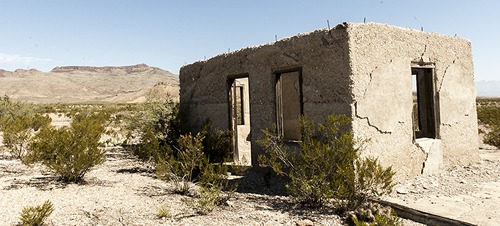
Photo courtesy Abdul Khan, October 2016

Photo courtesy Abdul Khan, October 2016

Photo courtesy Abdul Khan, October 2016

Photo courtesy Abdul Khan, October 2016
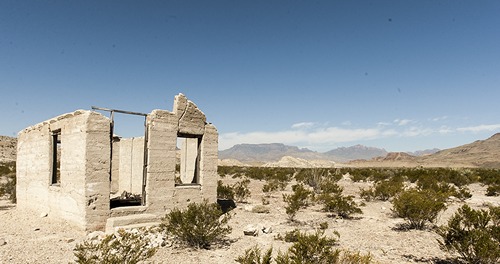
Photo courtesy Abdul Khan, October 2016

Photo courtesy Abdul Khan, October 2016
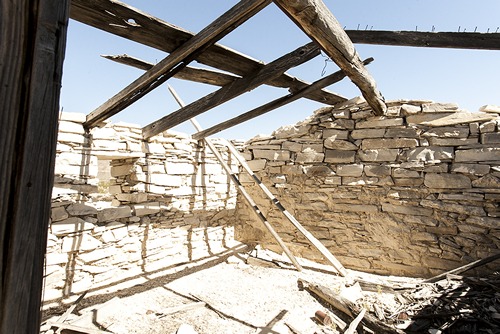
Photo courtesy Abdul Khan, October 2016

Photo courtesy Abdul Khan, October 2016

Photo courtesy Abdul Khan, October 2016

Photo courtesy Abdul Khan, October 2016
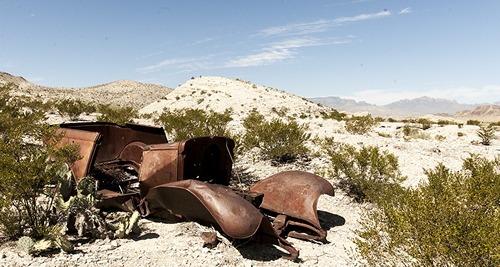
Photo courtesy Abdul Khan, October 2016
Mariscal Mine Photo Gallery
Erik Whetstone Photographs
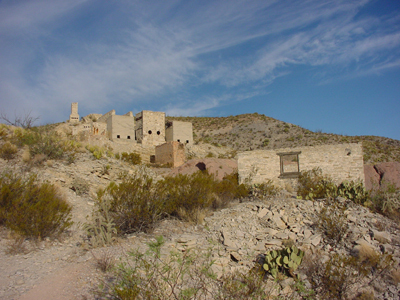
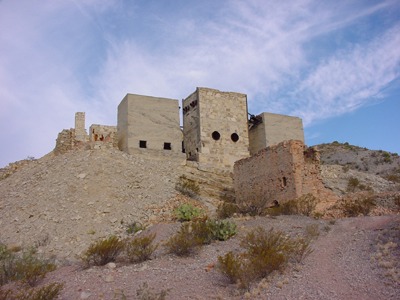
A closer image of the condensers and Scotts furnace. The Scotts furnace is in front of the condensers. When functioning the furnace was 40 feet tall and was 20 feet square.
Photo courtesy Erik Whetstone April 2006

One of the many covered mine shafts.
Photo courtesy Erik Whetstone April 2006

The chimney at the top of the furnace/condenser system.
Photo courtesy Erik Whetstone April 2006

A few of the worker-built stone houses
Photo courtesy Erik Whetstone April 2006

The company store? The mine can be seen in the background.
Photo courtesy Erik Whetstone April 2006

One of the concrete / stucco houses - about 40 yards from the company store.
Photo courtesy Erik Whetstone April 2006
